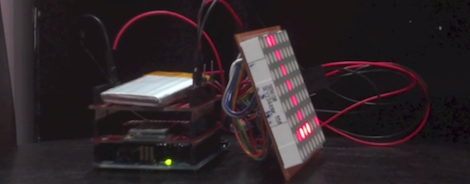Social Drink Machine (powered with Arduino)

This time Arduino for drinks, always from Romania.
Do you know what you get if you combine Facebook, Twitter, Arduino, Raspberry PI and alcohol ? Well, you get the Social Drink Machine and a lot of really happy people at HowToWeb Bucharest.
The Social Drink Machine involves a fully enabled robotic bar which prepares your dream cocktail, a Facebook application which you use to order the drink and also a Twitter bot as an alternative ordering method.
In order to “drink with Facebook”, all you have to do is to scan the QR code displayed next to the machine with your mobile phone. It will get you to a Facebook application which enables you to choose the drink you want. Once you have decided what you want to drink, the application displays a large QR code on your mobile phone. You show this to the machine camera, and you will get your drink prepared. Actually, a robotic machine will prepare it for you. All you have to do is to place the glass, which is then moved back and forth until all of the ingredients have been mixed. And if you wanna brag about this, the application allows you to post on Facebook about the crush you just got on the cool robotic bartender.
[Robofun - Create] also made this.












